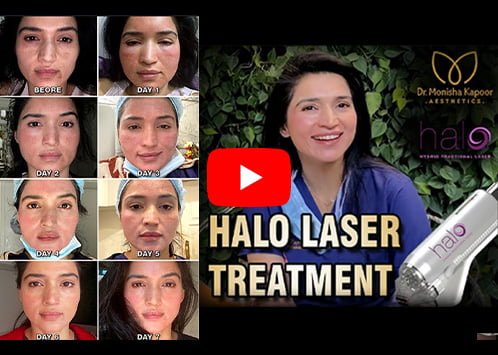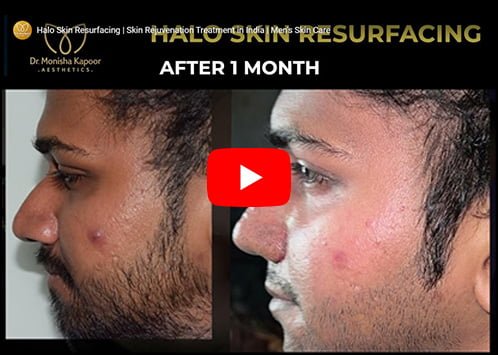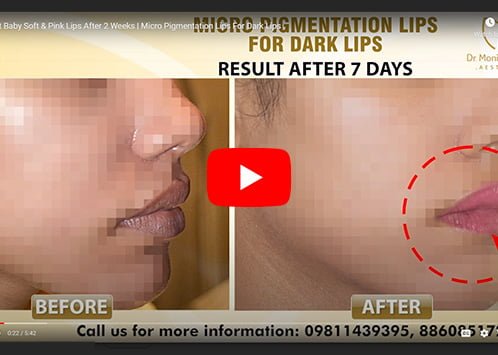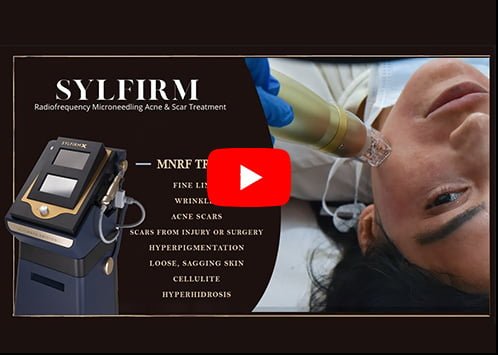Which Scars Benefit
from Revision?
Scars may be noticeable for a variety of reasons, and benefit from revision. Thick or prominent scars are often readily visible. Scars that indent tend to be noticeable when light striking the scar area highlights or shades regions within and around the scar. Scars are often more visible when they cross resting skin creases. Redness of a scar will often fade over time, and is therefore not a clear indication for revision.

Dr Monisha Kapoor, utilizes a variety of techniques to render scars less visible. Often, simple removal of the scar followed by meticulous closure yields a nice result. Where possible, scars are advanced and hidden at neighboring creases. Rearrangement of the skin around a scar is sometimes employed to relax tightness and to reorient a scar in a more favorable direction.
If it is unclear if a scar will benefit from revision continued observation for several months is best to allow the scar to mature. If ,however, it is clear shortly after an injury that a scar revision would be beneficial then prompt revisionary surgery can be planned.
There are various different types of scars. Following are the names and descriptions of different types of scars:
Acne Scars : Acne scars are a result of having severe acne problems. They may appear like deep pits or surface irregularities in the skin. Acne scars are mostly found on the face.
Discolouration or Surface Irregularities Scars : These are subtle scars that cause no physical discomfort to the patient. They may appear due to minor injuries, acne or minor surgical procedures that the patient has undergone previously.
Incision Scars: Incision scars are found at the location where the patient has previously undergone surgery. We take every effort to make it look the best possible.
Hypertrophic Scars : Hypertrophic scars red coloured, thick scars, that are located on the site of the injury. They are clusters of scar tissue that widen over time but do not go beyond the boundary line of the wound. They can be hyperpigmented (darker in colour) or hypopigmented (lighter in colour). Hypertrophic scars cause physical discomfort to the patient and may hamper their daily lives.
Keloid Scars : Keloid scars are larger than hypertrophic scars and move beyond the site of the injury or incision. They disrupt the patient’s daily routine and patients may have to stop certain physical activities depending on the location of the scar. These scars are painful and itchy and need immediate medical attention.
Contracture Scars : This type of scarring is caused by burn injuries. Contracture scars are painful and lead to restricted physical movements because the skin beneath the scar tissue bunches up together. A lot of skin tissue may also be lost when healing burn injuries. Contracture scars can make the patient uncomfortable and anxious.
Simple Scar Revision : Simple scar revision procedures can be performed under local anaesthesia for smaller sized scars. The plastic surgeon may use dermal fillers, injectables or gels to reduce the visibility of the scar and to help it blend in with the rest of the skin. This treatment can require single or multiple sessions depending on the size of the scar.
Fat Grafting Scar Revision : Fat grafting is a new technique in scar revision procedures. This is also called “Autologous” fat grafting (meaning the patient’s own tissues are used in the scar revision). This treatment involves liposuction (removing fat from one part of the body) and then injecting the tissues into the scar site.
This is an effective treatment when the scars are caused due to burns or surgery, and limit the range of motion for the patient. This surgical procedure is performed under local anaesthesia.
Skin Grafting Scar Revision : Skin grafting is similar to fat grafting. In the skin grafting procedure, the doctor will remove healthy skin from a part of your body and graft it onto the scar site. This improves the scar and blends in with the rest of the body.
Z Plasty Scar Revision : Z Plasty is a reliable surgical procedure for scar revision or scar repositioning. The cosmetic surgeon who performs Z Plasty needs to be highly skilled because this procedure involves critical operating techniques.
The procedure for Z Plasty helps in lengthening the scar or breaking it and finally camouflaging it with the relaxed tension lines of the rest of the skin. The outcome of a Z Plasty is to make the scar look like a natural part of the skin. The procedure is performed under local anaesthesia.
Keloid Scar Revision : Keloid is a type of scar that grows higher than the skin. Keloids appear after an injury has healed. They can be itchy and painful.
There are different treatment options for Keloid Scars:
Intralesional Injections- The surgeon will inject a steroid-based intralesional injection at the scar site. The steroid helps break the bonds between collagen fibres. This results in making the scarring smaller. The amount of injection will be determined based on the scar size and other health conditions of the patient.
Surgical Excision- In case of certain keloid scars the doctor may recommend surgical excision. In this treatment method, the doctor removes the keloid during a small surgical procedure and injects intralesional steroids to help in the healing.
But Keloid based scars have a probability of recurrence after treatment as well.
When the scarring is a result of surgery, there are ways in which the doctor can minimize the final size of the scar. If the cosmetic surgeon can take the following steps before and after the surgery, then the scarring can be minimized.
Following are steps for Scar Minimization Tips :
- First off, find the correct placement for the incision before the surgery.
- Next, ensure that you are handling the tissue with utmost gentleness and care.
- As a surgeon, use only the finest suture material for your patient.
- Take all the necessary steps to avoid infection to the surgery site.
- Provide good quality wound support to the patient.
- Remove all the stitches at the correct time (estimate the correct time based on the magnitude of the surgery)
- Give local medical applications as per necessity.
- Laser and energy based devices like Erbium Yag Laser, Carbon dioxide laser, Intense Pulsed Light IPL have proved to be useful in minimizing scarring in some situations. CO2, Erbium glass and IPL treatments require several sessions and the improvement is gradual. These therapies may significantly reduce scar maturation time.






